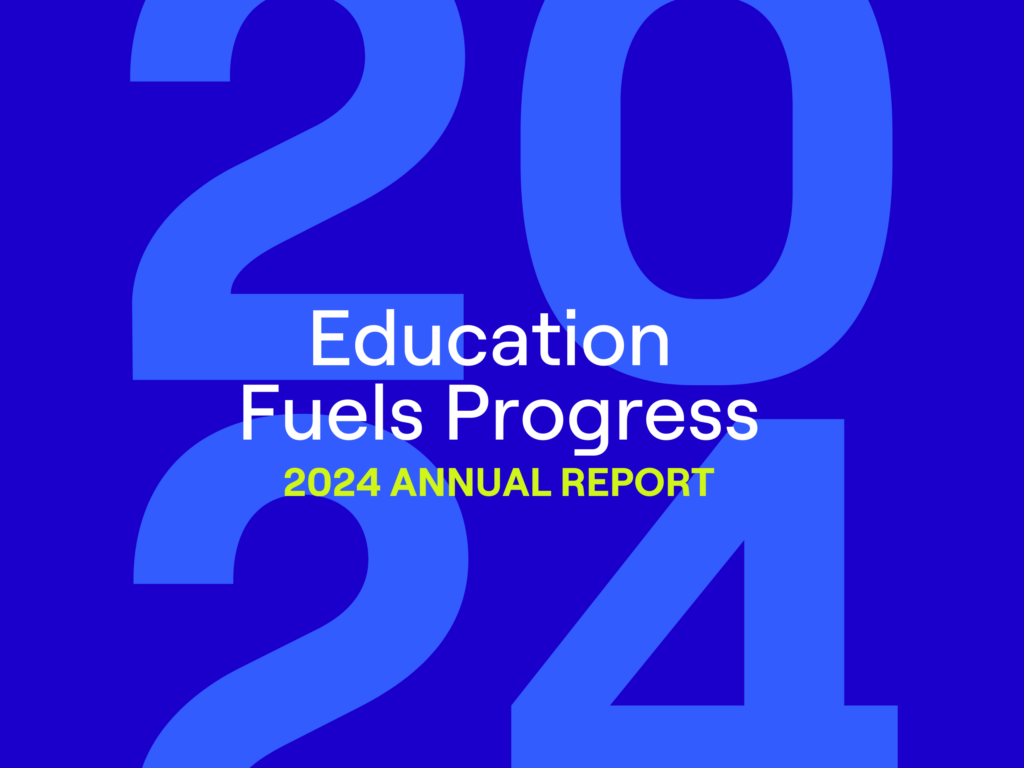Our latest guest post comes from Teach For America‘s Kevin Huffman, who is also a columnist at the Washington Post, in response to Mike Petrilli’s recent post warning entrepreneurs away from pursuing fickle federal government funding.
Mike Petrilli surfaced an interesting question in his blog entry here: should the education reform sector seek more federal funding to support efforts to scale and reach more kids, or should it “stick to its roots” in the private sector?
At some level, I get where Mike is coming from. I remember sitting in the Education Department offices when Mike worked there, watching the political and career people fight over the rules of a grant program, seeing Teach For America’s grant funding come and then go for completely arbitrary reasons. Those were good times!
But as long as he’s going to use Teach For America’s pursuit of federal funding as an example, let me offer a few thoughts, both about why we seek federal funding as an organization and also why we, as a community, should keep pushing for a reasonable share of federal education dollars.
For starters, Teach For America is probably the wrong foil for his point that organizations shouldn’t become overly reliant on Uncle Sam. The vast majority of our funding is private, the vast majority local, and we have grown private support at about 30 percent a year, compounded, for a decade. Even at our largest request, federal funding would be 20 percent of our annual budget, so it’s hard to make the case that we are feeding at the public trough.
As for his concern that we are pursuing “old-fashioned pork” by seeking direct federal funding, here are a couple of thoughts. First, the federal government should fund effective organizations that are national in scope, have demonstrated impact, and meet a pressing national need. Second, in funding nonprofits, the government should operate similarly to a well-run foundation. It should prioritize funding programs that have evidence of impact, and it should fund in a way that is reasonably predictable. As for Mike’s argument that federal funding should be used mainly for R&D, I think the opposite is true. Private philanthropists generally like investing in R&D, while ongoing operational support is the heavier lift.
In Teach For America’s case, we were authorized by Congress for annual funding in the Higher Education Act. And while competitive grant programs are a good vehicle for certain kinds of grants (e.g. one-time scale-up funding, or funding the creation of new programming), they are not an effective way to provide predictable annual funding for national programs at scale. The government can and should set a high bar for budget inclusion by requiring authorized programs to produce annual evidence of impact. But it’s a questionable assertion that peer-review grant programs are either: a) reliable or b) the only way to have quality-control.
Mike’s broad point is that non-profits shouldn’t become over-reliant on the feds. This is good advice for any single funding source, public or private. Diversification of funding sources is a good basic management strategy, as is having a plan B if any large streams disappear. So count me in on that advice.
At the same time, the federal government is giving out $3 billion just in title II teacher quality funds this year – some of which is spent wisely, some not so much. By contrast, the Bill & Melinda Gates Foundation – far and away the largest education funder – gives away about $200 million a year to elementary and secondary education. It makes little sense to cede all of the annual federal funding to the same well-greased paths, while fighting with each other for relatively static philanthropic dollars. We can either push for an incremental 6 percent of the Title II dollars to be spent on effective nonprofit programs, for example, or hope that another Bill Gates materializes.
Federal funding on education – which is itself just 7 to 9 percent of overall public education spending – dwarfs philanthropic dollars in such a staggering way that it seems, frankly, misguided to ask effective education nonprofits to walk away from it. Instead, we should all continue to push for spending based on effectiveness and for a bigger share of the pie to go to programs and organizations with the potential to effect transformative change.
Kevin Huffman was the winner of the America’s Next Great Pundit competition, beating out 4,800 contestants to sign a three-month contract with The Washington Post. His column — on politics, policy and culture — appears on Fridays and he contributes regularly to PostPartisan. Huffman is the executive vice president of public affairs at Teach For America, where he has served as a senior manager for nearly 10 years. A native of Ohio, he practiced education law in Washington D.C. and was a bilingual first grade teacher in Texas before joining Teach For America’s staff.


